Ask Me Anything: Candle Wax Removal, Laundry Sanitizer, Heavy-Duty Window Cleaner
Perhaps it’s happened to you: A many-candled birthday cake or lovely candle centerpiece goes awry, leaving you with a mess of melted candle wax, now hardened and hopelessly stuck to your beautiful wood table. Can that table be saved?

Coax Candle Wax Off Wood Surface
Dear Mary: I was given a beautiful wood pub table. It has candle wax stuck to it from, I am assuming, someone blowing out candles. How do I fix this without scraping it with a knife? Kathy
Dear Kathy: Soften the dried wax with a hairdryer set to medium heat, pointing the dryer to the wax while keeping it 3 to 4 inches away from the table.
Once softened, blot the wax with a soft, white cloth. Keep working at it by softening then blotting until you have removed all of the wax.
Next, mix 1/2 cup white vinegar with 1 cup of water. Dip the cloth into the vinegar mix and wipe away any wax that may remain.
Last, clean your table with furniture polish to restore the shine. That should do it!
Sanitize Laundry
Dear Mary: Thank you for all you do to help us save time, money and our planet. I have been following your advice for years, and eagerly pass on what I find helpful and the products that have become second nature in our home.
My husband is a plumber, and to say that his work clothes get nasty is an understatement. Recently we bought Lysol Laundry Sanitizer—two large bottles for $16. I make our laundry detergent, add white vinegar to the final rinse, and have two sets of wool dryer balls. Was I already sanitizing his clothes with that vinegar? Nancy
Dear Nancy: Lysol Laundry Sanitizer has been around for years. If you check the ingredients, you’ll see that it contains mostly water with small amounts of ethanol and alkyl dimethyl benzyl ammonium chlorides (basically alcohol and “salt”). I’m not saying those two ingredients together don’t kill some bacteria but why pay $8 a bottle to do what you can, and are already, doing yourself?
Detergent and hot water kill most bacteria. Acetic acid (white vinegar from the supermarket is 5% acetic acid) is a great disinfectant. It also acts as a deodorizer and cuts grease.
You can tackle salmonella, E. coli and other “gram-negative” bacteria with vinegar. Gram-negative bacteria can cause pneumonia, meningitis and bloodstream, wound or surgical site infections.
I advise that buying a pricey product like Lysol Laundry Sanitizer is a waste of money because cheap white vinegar with 5% acidity, when added to the rinse cycle, is effective for sanitizing laundry.
If you’re dealing with nasty stains, I highly recommend that you pretreat them with Lestoil, a heavy-duty multi-purpose cleaner that smells awful (that smell disappears in the wash cycle). It’s amazing against industrial strength grease and other kinds of icky stuff plumbers deal with.
Last, I would encourage you to launder your husband’s work duds in hot water. Not boiling hot, but the temperature your washer produces at the HOT setting, which likely closer to 145 F – 165 F. That’s not burning hot, but will boost all of the products you are using and make them work better.
Thanks for your kind words and being such a loyal reader and fan! It means the world to me.
Make-It-Yourself Window Cleaner
Dear Mary: Some time ago you published a recipe making your own glass and mirror cleaner. I always used it and loved it, but I seem to have misplaced the recipe. I know it included blue Dawn. Could you possibly repeat that? Thank you. Marilyn
Dear Marilyn: I did a quick search at EverydayCheapskate.com using the keywords “Dawn + window” and up popped this recipe, which I believe may be the one you are referring to:
Heavy-Duty Window Cleaner
- 1/2 cup household ammonia
- 2 cups rubbing alcohol
- 1 teaspoon blue Dawn liquid dishwashing detergent
- Water
Mix ammonia, alcohol and detergent in a gallon jug with a tight-fitting lid. Fill to top with water. Apply lid securely. Label clearly and store out of the reach of children. Dispense in a good spray bottle. Shake gently before each use. This solution is fantastic for cleaning any glass or mirror, but especially effective on filthy windows.
More: Sparkling Clean Windows—Cheaper, Better, Faster!
There are affiliate links in this post. If you click through and make a purchase, we may receive a small commission at no additional cost to you.



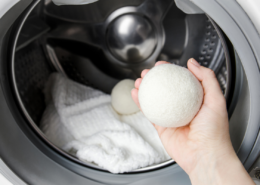

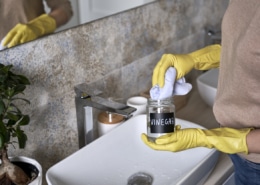

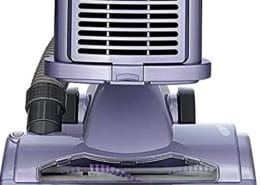
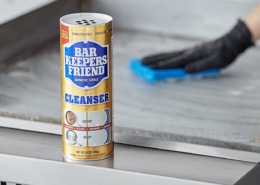
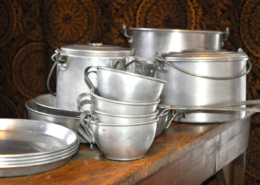
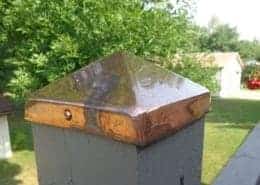
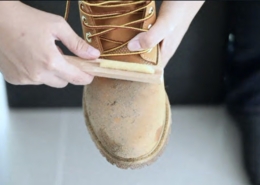


Hi Mary,
How can I remove built up hair spray from a flat iron – I don’t wash my hair every day but comb the hair spray out (or at least I think I do – apparently not) at night. I notice it has built up on the irons and I can’t seem to remove it. I have used goo gone, dawn liquid, alcohol, bar keepers friend. tooth paste. ugh!! Any ideas would be appreciated. Thanks
RE: Sanitize Laundry with vinegar. How do you add 1/2 cup of vinegar to a front-loading washer when it’s rinse time? Probably a stupid question.
TIA.
Not stupid! Your machine probably has a reservoir for “liquid softener” which releases during the rinse cycle. Fill that with vinegar! That’s what I do with my front-loader!
REGARDING “Sanitize Laundry”- Also, as Mary has told us before, the white vinegar in the rinse cycle demineralizes my front loading washer. Since I’ve been using 1/2 cup in my rinse cycle, I have never had any of those nasty mineral buildup problems. And, no, it doesn’t make the laundry smell like vinegar at all.